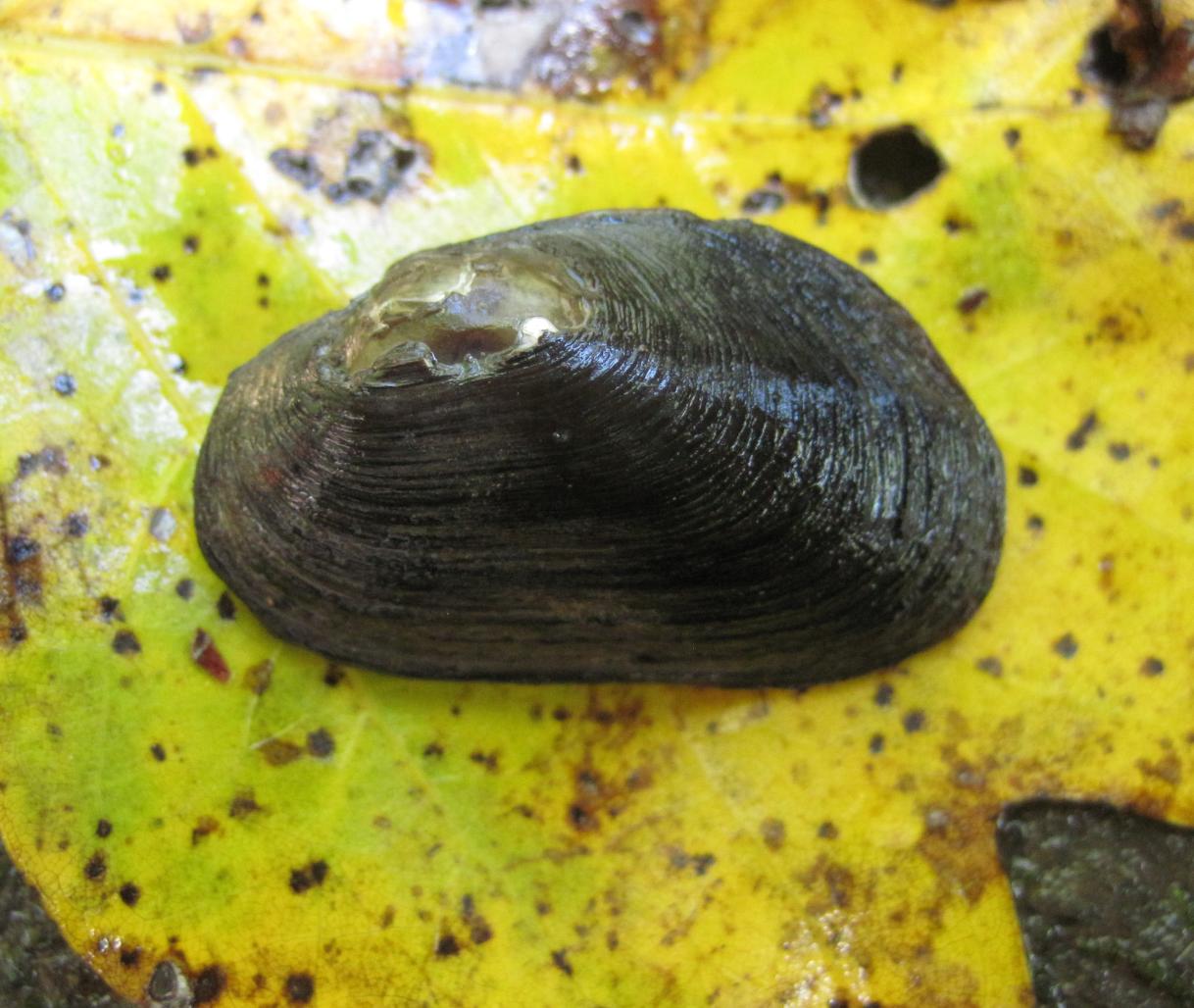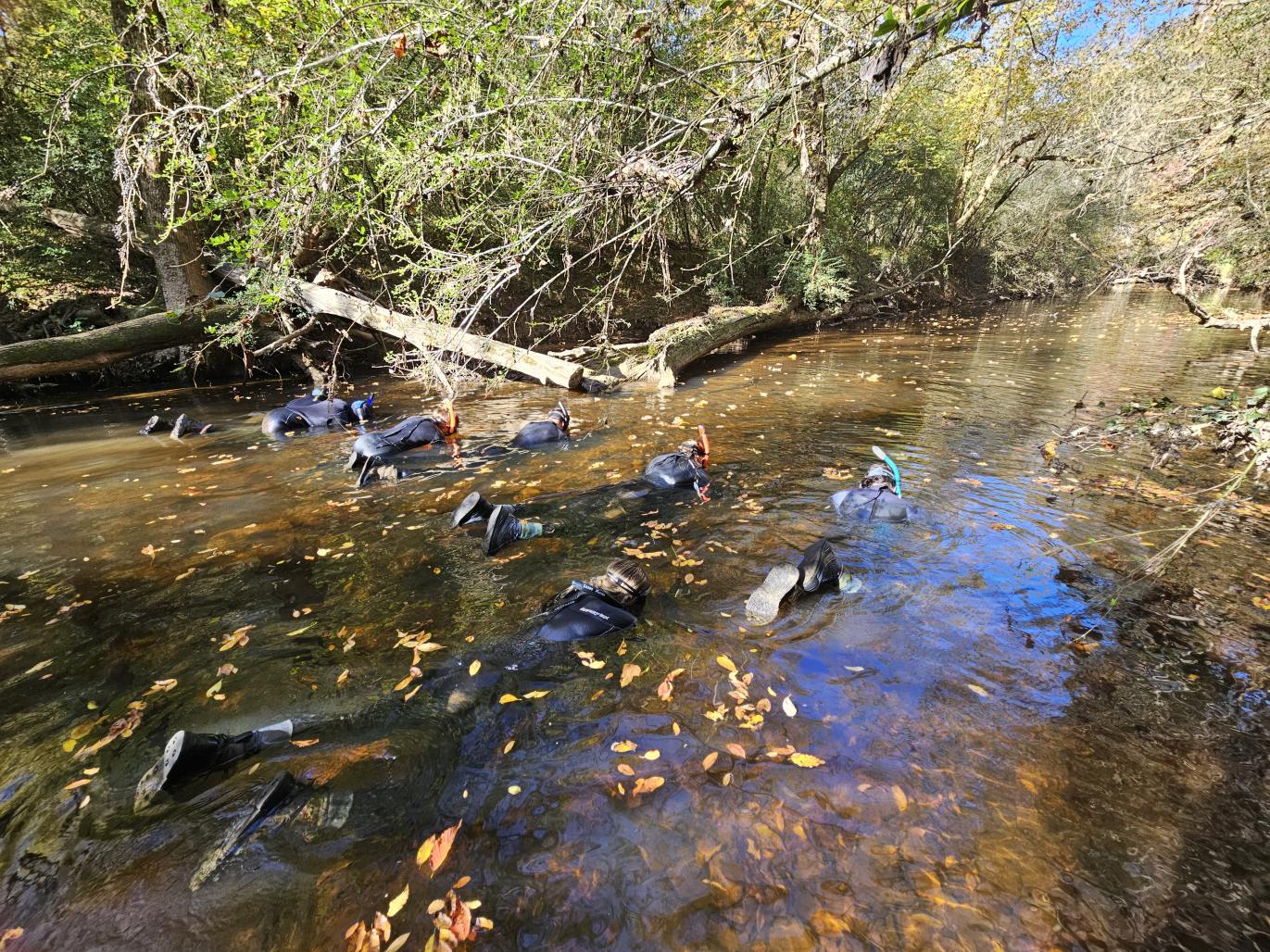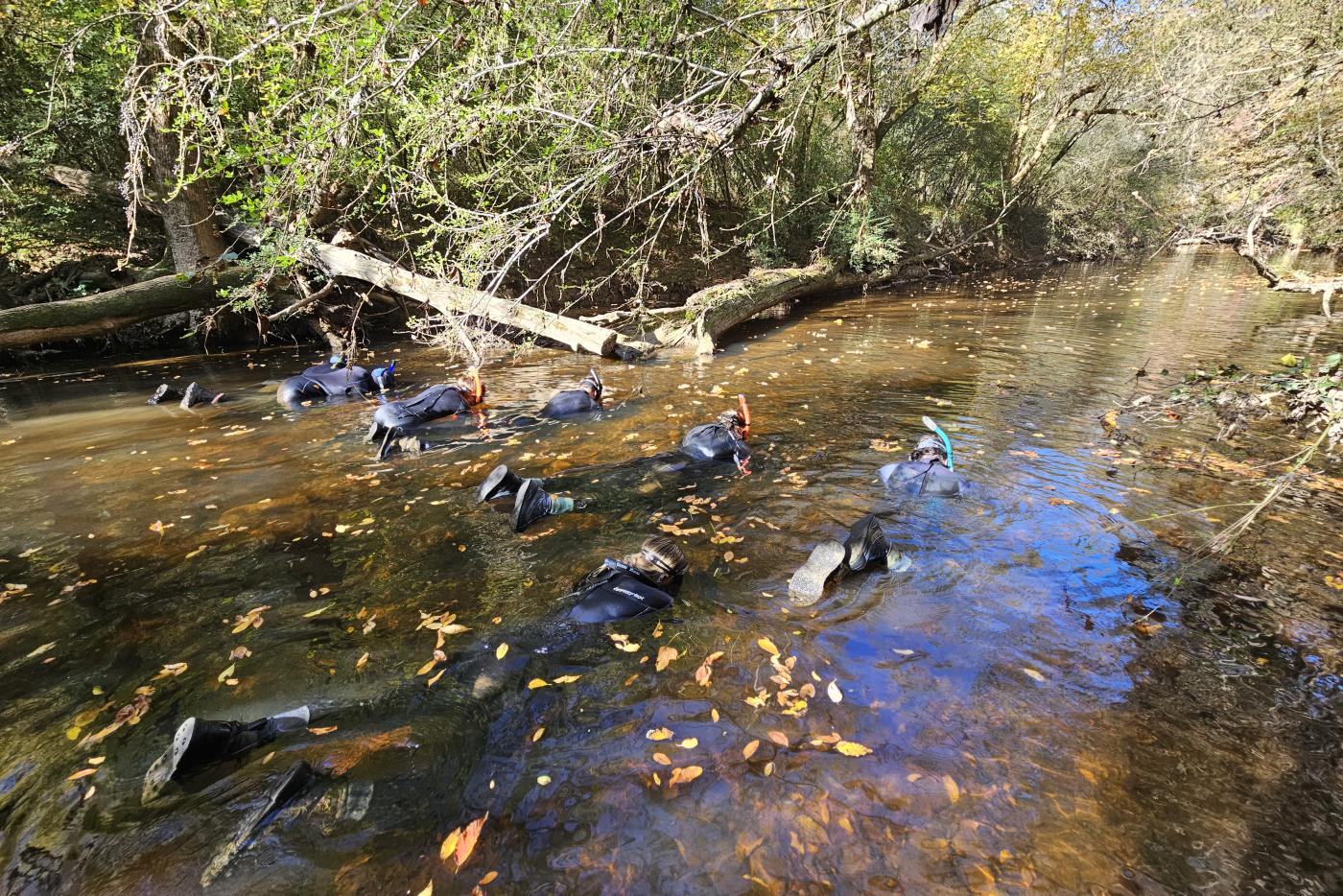Author: Erin Warner
A new genus and species
In 2016, during a routine mussel survey on the Little River, biologists at the North Carolina Wildlife Resources Commission (NCWRC) paused: one specimen, originally assumed to be a green floater, didn’t quite match familiar shell traits, so they collected a tissue sample for further study.
Over the next nine years, the NCWRC team repeated reviews of shell features, cross-laboratory genetic tests, and strategic sampling in Little River and nearby streams.
“We noticed that some of the shell characteristics... particularly the internal teeth, did not align with those of the green floater... We were able to use genetic analysis to confirm that [this mussel] was indeed a unique species in its own taxonomic group,” says Landscape Conservation Coordinator Brena Jones.
Today, Ligodonta obscura is recognized not only as a new species, but the mussel is so distinct that it deserves its own genus. This isn't just a minor addition to the family tree, it’s a whole new branch!

L. obscura is located in Central North Carolina and nicknamed the solstice creekmussel as it spawns during the winter solstice.
“Getting a name on the species is the first step to understanding its role in the ecosystem and how to better conserve and protect it,” says Aquatic Wildlife Diversity Coordinator Michael Perkins.
Only one stream
NCWRC biologists found the solstice creekmussel within about 8 miles of two nearby watersheds in North Carolina’s Yadkin-Pee Dee River system.
Since the mussel’s discovery, the team has observed a decline in population. Today, it survives in only a 4-mile stretch of one stream.
Occurring in a single location, L. obscura is labeled as microendemic, a major warning sign in terms of conservation risk.

Freshwater mussels like this one are among the world’s most threatened animal groups, with large percentages of species in the U.S. considered of conservation concern.
“This species was likely always relatively rare, but now we can only find it one section of one stream on the entire planet! It’s special and unique to only here and the value of that is difficult to overstate,” says Perkins.
Mussels clean our waterways
Mussels quietly clean water, cycle nutrients, and support healthy rivers, services that disappear as mussel populations decline.
“Mussels are like canaries in a coal mine,” says Inland Fisheries Assistant Chief Rachael Hoch.
They thrive in clean water, making their presence an excellent indicator of healthy waterways. That’s why protecting small streams is critical for biodiversity and overall water supply health.
Because the solstice creekmussel is so rare and limited in range, its discovery doubles as a conservation alarm: protecting the specific stream stretch where it survives is now a top priority for the NCWRC aquatic wildlife diversity team.
“If our populations of native aquatic species are declining or lost, it means our water supply is also degraded and we need to take action to protect and restore both for the future of both human and wildlife communities,” says Jones.
What you can do
To support the protection of the solstice creekmussel and similar species:
- Avoid Relocating Mussels: Never move live animals or plants between waterways, as this can spread diseases and disrupt local ecosystems. It’s also illegal.
- Support Conservation Funding: Donate to the Wildlife Diversity to assist in habitat preservation and species monitoring.
- Maintain Streamside Vegetation: Utilize resources from Shade Your Streams to manage land near waterways responsibly.
- Volunteer for River Protection: Engage with local organizations like River Keeper to participate in clean-up efforts and advocate for stream protection.
- Proper Land Management: If you live near a waterway, resources from the Wildlife Conservation Land program can guide you in maintaining your land to support biodiversity and healthy water systems. For example, avoid mowing within 50 yards of streams and ensure septic systems are functioning properly to prevent contamination.
Sign up for more conservation news
More hidden species to be found
Biologists Brena Jones, Heather Evans, Sierra Benfield, and Michael Perkins of the NCWRC were instrumental in identifying L. obscura.
The discovery of the solstice creekmussel is proof that even in well-studied regions, there are hidden species waiting to be found!
“...there are plenty more wonders out there still waiting to be discovered today. Each plays an important role is our ecosystems,” says Jones.
For a detailed scientific description of L. obscura, including intricate measurements of every feature, genetic analyses, survey efforts, species distribution and mapping visit the research published in ZooKeys.
“Every animal no matter how big or small, how common or rare, has its place in the world. It’s amazing to still discover species in a place that’s been inhabited for so long, and subjected to numerous stressors over many decades,” says Perkins.

